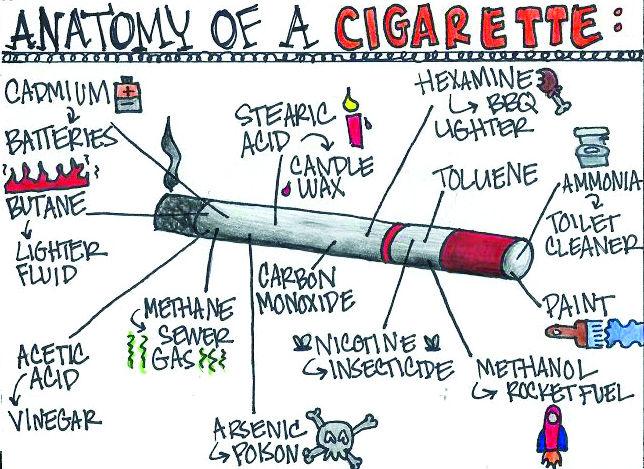QUIT program helps students kick smoking habits
May 28, 2014
After smoking cigarettes for about a year and a half, Veronica Hill decided it was time to quit.
Hill, a senior nursing major, said she decided to quit on her birthday last December. The process took “no time,” she said, but she added that challenges arose along the way.
“A lot of my friends smoke, and I had always been a social smoker,” Hill said. “But when I told them I quit, they all tried their hardest not to smoke around me.”
Although Hill did not use any programs to aid her when she quit smoking, there are resources available to students on campus who want to break the habit.
QUIT, which stands for Quit Using Irritating Tobacco, is a program available free of charge to students seeking help as they try to kick their smoking habits. Students trying to quit smoking can receive education, support and nicotine patches from the University, free of charge.
Marian Vanek, Director of Student Health, said that the QUIT program has been in place since she started working for Student Health four years ago, but added that she does not know when the program started. No one in the Office of Student Health could confirm when the QUIT program started.
Vanek said she was unable to provide names of any students who have gone through the program for privacy reasons.
Student Health Services sponsors the program, which includes one-hour-long, one-on-one counseling sessions with a health professional, as well as access to resources such as nicotine patches.
According to the Student Affairs website, the QUIT program, which is part of the Office of Health Education and Promotion, addresses the stressors and triggers that cause students to crave tobacco products. Health educators meet with students twice a week to discuss the causes of tobacco use and work with students to find ways to overcome those challenges.
The program is available to undergraduate and graduate students.
A 2012 study by the Centers for Disease Control and Prevention found that 22.4 percent of adults living in Pennsylvania smoke, which is higher than the national average of 21.2 percent of adults.
Graeme Meyer, a Student Government Board member, has been collecting data on smoking since he first distributed a smoking survey on campus in April. The survey is still available online and is linked on the Student Government Board home page. Meyer hopes to use the results from his survey to determine if students will support a smoke-free policy on campus.
Meyer said he has collected 853 student responses for his survey as of May 14.
Of the 853 surveys completed, 515 students reported they did not smoke tobacco products, and 56 students said they quit smoking.
The remaining 282 students reported that they do smoke tobacco products. From that number, 87 students said they smoke daily, 49 said they smoke once or twice a week, 55 said they smoke once or twice a month, 51 said they smoke once or twice a semester and 40 said they smoke once or twice a year.
According to Megan Stahl, a health educator at Student Health Services, within the past academic year, 50 percent of students who participated in the QUIT program remained smoke-free one month later. Three months after completing the program 30 percent of students were still not using tobacco products.
After students complete the QUIT program, health educators contact them by phone and email to follow up on their progress. Health educators also monitor how effective the program is for students through surveys upon their program completion.
Stahl said that it typically takes students about six weeks to complete the program, but she added that Student Health is “flexible” with the length of the program. Some students complete the program in less than six weeks, and other students ask for additional appointments beyond the six weeks.
Students also have access to, but aren’t required to use, nicotine patches while they’re actively participating in the program.
Vanek said that between 20 and 30 students use the QUIT program each year.
Dr. Elizabeth Wettick, Director of the Medical Service Clinic in the Office of Student Health, said programs like QUIT result in higher success rates among people who are trying to quit smoking.
Wettick said that only three to seven percent of smokers who attempt to quit smoking on their own remain smoke-free after one year. Wettick added that with “optimal treatment,” which included interventions from health professionals, the rate of individuals who remain smoke-free after one year jumps to 30 percent.
Wettick said programs like QUIT prepare people for the struggles they will face while they are trying to quit. Wettick added that health educators should strategize how to overcome those struggles.
Hill said she did not use the QUIT program and added that she does not think she would have been a good candidate for the program.
“I don’t think the QUIT program would have worked for me, because I’m more of a self-motivated person,” Hill said. “I don’t really use support systems of other people very often, and if I want to do something, I just do it.”








